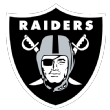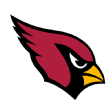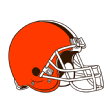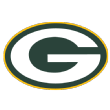The 2017 unrestricted free-agent market hit its 100th agreement on Tuesday, when Eddie Lacy signed a one-year deal with the Seattle Seahawks. I already looked at the most improved teams so far, so it's time to hit the inverse today: Which teams are worse off through the first week of free agency?
One team that isn't on this list now but might be next week is the New England Patriots, who have suffered some key losses on defense and could still lose linebacker Dont'a Hightower (Update: Hightower is returning to the Patriots) and restricted free-agent cornerback Malcolm Butler. Hightower is actively shopping for a team that will pay his $12 million per year asking price, and Butler could move on after the Patriots chose to sign Stephon Gilmore from the Bills and give him $40 million guarantees.
The New England defense also has lost linemen Jabaal Sheard and Chris Long, along with No. 2 cornerback Logan Ryan. That's a lot to replace, even as the offense got better with the addition of Brandin Cooks. The league's top defense in points allowed in 2016 (15.6 per game) is weaker than it was when it ended the season.
Here are the five teams that have been hit the hardest:

1. Oakland Raiders
Biggest losses: LB Malcolm Smith, DT Stacy McGee, OT Menelik Watson, CB D.J. Hayden
The Raiders have taken the biggest free-agency hits, all while they are being patient and waiting for the prices to come down on a few players. Seven former Raiders have signed elsewhere, and the team also could lose running back Latavius Murray and linebacker Perry Riley. The offensive line took a slight step back by losing Watson to the division-rival Broncos and replacing him with Marshall Newhouse, whom they got on a cheap deal. Newhouse will battle Austin Howard and Vadal Alexander for the right tackle job. Oakland did add wide receiver and returner Cordarrelle Patterson, but after Oakland doled out big contracts in 2016 -- the Raiders gave a combined $64.4 million in guarantees to guard Kelechi Osemele, linebacker Bruce Irvin and cornerback Sean Smith last March -- this offseason could be a step back.

2. Cincinnati Bengals
Biggest losses: G Kevin Zeitler, OT, Andrew Whitworth, DT Domata Peko, RB Rex Burkhead
The Bengals' offense never recovered from the free-agent losses of wide receivers Marvin Jones and Mohamed Sanu last season. They lost close to six points per game off their average on offense (26.2 to 20.3). Now, the Bengals' offensive line has lost its two best blockers, Zeitler and Whitworth, which will make it even tougher for quarterback Andy Dalton to succeed. Cincinnati has brought back Andre Smith to compete with draft picks Jake Fisher and Cedric Ogbuehi at tackle, but that's a clear downgrade from Whitworth. The Bengals' five-year playoff streak was snapped in 2016, and I think they've declined again. They need to hit on the No. 9 overall pick.

3. Arizona Cardinals
Biggest losses: DE Calais Campbell, S Tony Jefferson, S D.J. Swearinger, CB Marcus Cooper, OT Earl Watford
The Cardinals, who ranked second in overall total defense in 2016, might drop a level or two with their free-agent losses. They figure to lose as many as six decent defenders: Campbell, Cooper, Jefferson, Swearinger, pass-rusher Alex Okafor and potentially linebacker Kevin Minter. The signing of Karlos Dansby and Jarvis Jones likely signals Minter's pending departure, and the Cardinals brought in 32-year-old Antoine Bethea on a cheap deal to provide cover at safety. Arizona has to hope that 2016 first-round pick Robert Nkemdiche can improve and take Campbell's spot, and the team is still looking for a No. 2 cornerback. That spot might have to be filled with the No. 13 overall pick.

4. Cleveland Browns
Biggest losses: S Jordan Poyer, WR Terrelle Pryor Sr., QB Robert Griffin III, QB Josh McCown
Although it was great picking up a second-round pick in the 2018 draft in the Brock Osweiler salary dump, the Browns are lacking at quarterback -- again -- and that's putting it mildly. Robert Griffin III and Josh McCown have been cut, and Osweiler is expected to be released if no other team trades for him. That leaves the Browns with Cody Kessler and Kevin Hogan. Adding Kenny Britt to replace Pryor is not an upgrade, especially with the guaranteed money given to Britt ($17 million). The only positive in the Browns' second offseason of their analytics era? The offensive line is much improved, with the addition of Kevin Zeitler and JC Tretter, and the Browns have a boatload of picks in April's draft to try to find replacements.

5. Green Bay Packers
Biggest losses: G T.J. Lang, S Micah Hyde, C JC Tretter, RB Eddie Lacy, OLB Julius Peppers
Fortunately, general manager Ted Thompson drafts well and finds great undrafted free agents. With that homegrown philosophy, the Packers have depth. But that is being challenged by the first week of free agency. They lost Lacy to Seattle and cut James Starks, so they are going to be forced to find running back help. The offensive line lost guard Lang after losing Josh Sitton last year, which makes two Pro Bowl guards gone from the roster with no ready-made replacements. Pass-rushers Peppers and Datone Jones are now gone too. The Packers did upgrade at tight end with Martellus Bennett over Jared Cook, but they got worse at other positions.
